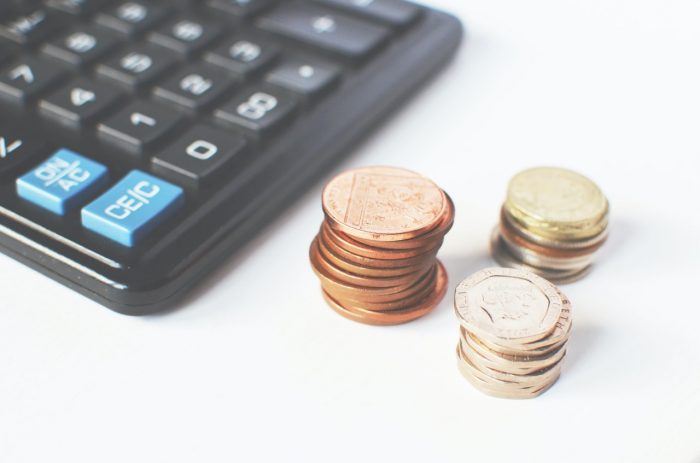If you live in Europe, you’ll need to know how to calculate PAYE taxes.
When it comes to paying taxes, many people have a hard time determining how much they need to set aside.
In most cases, employers will keep retention tax so that you don’t have to worry about calculations. However, some people need to calculate and pay everything manually.
When you pay as you go, you’ll need to keep track of all your income. You’ll also need to know what deductions will be made so that you can send the proper amount of money.
Keep on reading to learn how to calculate PAYE taxes!
What Is the PAYE System?
The Pay As You Earn (PAYE) system is a type of tax-paying method that the UK uses.
This system covers both income tax and contributions to things like national insurance. Whenever you’re paid, these deductions will be made before you receive your wages from an employer.
Some of the main wages that are covered under the PAYE system are sick pay, maternity, and paternity pay.
Throughout the entire year, you’ll need to pay taxes with each check instead of paying everything at once. Your employer will take this money and send it to the HM Revenue and Customs (HMRC).
With each check, you’ll receive a pay stub that will outline where your money went. You can see how much you’ve earned and how much went to deductions.
However, those that get pensions might not get pay stubs with each paycheck.
At the end of the year, you’ll receive what’s known as a P60 form. This form will tell you how much you earned and paid in taxes for the entire year.
In the UK, the tax year begins on April 6 and goes until April 5 of the following year.
Tax Codes
When it comes to tax withholding, employers are provided with tax codes that make it easier for them to calculate how much to withhold.
In cases where the HMRC can’t provide an employer with a tax code, they’ll be provided with an emergency tax code that’s used as a baseline for the tax withholding.
To find out what your tax code is, you can find it on your pay stubs and in your pension statement if you earn a pension.
You’ll also receive a notice in the mail that informs you of your tax code.
Emergency Tax Codes
Because employers need specific tax codes to deduct the proper amount from your pay, the emergency tax code will be used temporarily until you’re given one.
With an emergency tax code, you can expect to pay the basic taxes that you would if you didn’t have anything other than a personal allowance.
When your employer does receive the proper tax code for you, you’ll stop being taxed on the emergency code.
You’ll then begin having the proper amount deducted from your taxes and you will get refunded if you’ve overpaid taxes because of the emergency code.
If you think you’ve paid too much and weren’t refunding, you can claim a refund by notifying your local tax office. This can happen quite often to those with emergency tax codes.
Notice of Coding
The notice that informs you of your tax code will let you know whether you have to pay your taxes with the PAYE system.
You can expect to receive it any time between January and February before the tax year starts on April 6. The code that you’ll see will only apply to that tax year.
Some people aren’t given a notice of coding because it depends on your income, allowances, and reliefs.
If the only thing that’s changing is your tax rate, your employer will make the changes without providing a notice of coding.
When you receive a notice of coding, you’ll need to check that the correct allowances and reliefs have been provided.
If you need help, you can contact the HMRC via the phone number that’s on your notice.

Self-Assessment
Anyone that has a taxable income but doesn’t receive deductions under PAYE will need to file a tax form and send it to the HMRC. This self-assessment will cover things like income from renting a room, self-employment, and other income.
Whenever you receive taxable income that isn’t covered under the PAYE system, you need to notify HMRC. They’ll let you know if you need to file a separate form depending on what type of income it is.
To ensure you’re deducting the correct amounts, it’s best to contact them as soon as possible.
You should also contact them if you think you’ve deducted too much or too little.
Tax Credits
A tax credit is something that reduces how much you have to pay in taxes.
You can get tax credits for a variety of things, but some of the main people that get them are PAYE employees, home carers, and retirees.
Tax credits can’t be refunded, but unused tax credit can be used in later pay periods within the same tax year.
Here are some of the most common tax credits:
Age Tax Credit
You can claim the Age Tax Credit if you’re 65 years or older during the tax year. If you’re assessed and your partner is 65 or older, you can also claim it.
Those that claim the Age Tax Credit can expect to get €245 if they’re single, widowed, or surviving their civil partner. If you’re jointly or separately assessed, you can get €490.
You don’t need to apply for this tax credit because it will be automatically granted during the year you or your partner turns 65.
Employee Tax Credit
The Employee Tax Credit happens to be the most common one because most people pay taxes under the PAYE system.
If you’re an Irish resident and receive a social security pension from someone in an EU Member State or wages from a PAYE-system employer, you’re entitled to this tax credit.
As of 2020, the most that people could claim is €1,650, but the amount will vary depending on how much you earn.
If you earn more than €8,250, you can get the entire amount. Anyone that earns less than that will be limited to 20% of their income.
Those that are married or in a civil partnership are both entitled to this tax credit providing that they both receive PAYE income. This credit cannot be transferred to a partner.
You also can’t receive multiple Employee Tax Credits, no matter how many jobs you have. If you’re entitled to this credit but haven’t received it for prior years, you can still claim them by using the myAccount website.
Reliefs and Exemptions
Unlike tax credits, reliefs and exemptions don’t apply directly to the amount of tax you have to pay. Instead, tax reliefs revolve around determining your taxable income.
Because of this, you may receive refunds if you’ve paid more than you owe.
Tax exemptions let you avoid paying taxes on certain types of income depending on whether you qualify for them. Marginal relief is a common tax exemption and it applies to those over the age of 65.
When it comes to reliefs and exemptions, the amount of federal income tax you’ll owe will vary depending on your age, income, and marital status.
In most cases, those that are married or are in civil partnerships end up getting more relief.
How to Calculate PAYE Taxes
Now that you have a better understanding of the PAYE system and the things surrounding it, you should know how to calculate your PAYE taxes.
When calculating PAYE taxes, you’ll have two methods to choose from: periodic and averaging.
When using the periodic method, you’ll calculate your taxes for each month. The averaging method requires you to calculate everything from the entire tax year.
Calculating your taxes is simple as you’ll just need to know how much you’ve earned and what deductions will be applied.
With your tax code, you can see which reliefs, exemptions, and tax credits you’ll receive for that tax year. From there, you need to add and subtract them from your income as you need.
It’s best to use a spreadsheet to keep track of your income and all of the variables. It doesn’t matter which method you use to calculate your taxes, but the averaging method will be simpler to follow.
Use a PAYE calculator if you’re having a hard time.
Although the periodic method lets you see how much you owe in taxes for each individual month, this can cause some confusion when you’re adding everything up.
Now You’re Ready to Pay Taxes
After reading this article, you now know everything you need to know about the PAYE system and how to calculate PAYE taxes.
It is recommended that you start working on a spreadsheet as soon as possible so that you can monitor your income.
Throughout each tax year, you’ll need to keep all of your pay stubs and bank statements. This will prevent you from entering the wrong numbers when you start calculating your taxes.


